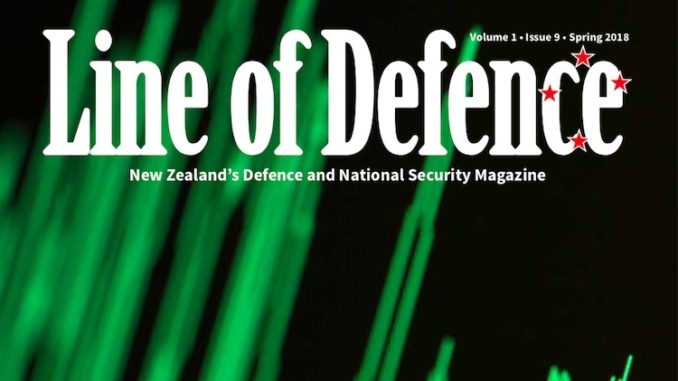
> view the digital edition
Welcome to the Spring 2018 issue of Line of Defence Magazine. With this issue, we’re proud to be again associated with the New Zealand Defence Industry Association’s Annual Forum. To all delegates, exhibitors and speakers at NZDIA 2018, we wish you a most successful event!
In this issue we are again honoured to feature the insights and opinions of several eminent contributing authors and interviewees. If there are themes at all that we can attach to this edition, they would be: the benefits of relational contracting, fact-checking the China hype, and the need for new thinking and investment in New Zealand’s national security. Below I showcase a mere selection of what this issue offers!
In Defence, Minister Ron Mark tells us that defence estate regeneration is very much on his radar, and that C-130 replacement will feature prominently in the upcoming Defence Capability Plan.. Mark Mitchell welcomes the Government’s P8 decision, but criticises the purchase of a second-hand survey and light construction ship to replace the Resolution and Manawanui., It’s skimping, he says, that may well face stiff – and as yet undisclosed – fit-out costs down the track.
In this issue we benefit from the insights of two Australians who are making their way to NZDIA 2018 in Palmerston North. Both will be speaking at the event, and one will be MC! We carry on with Part Two of an inspiring interview on relational contracting with the Royal Australian Navy’s CAPT Greg Laxton, and we chat with Dr Alan Ryan, Executive Director of the Australian Civil-Military Centre, who elaborates on the evolving challenges facing civil-military collaboration.
In National Security we feature a truly disruptive article line-up. Dr Wayne Mapp argues the case for greater New Zealand investment in international peacekeeping participation and in critical foreign and security policy formation. Dr Simon Ewing-Jarvie takes the case a step further and asks why New Zealand has neither a National Security Strategy nor a funded national security ministerial portfolio. I weigh in on the topic of Chinese tech firm bashing, suggesting that paranoia over Huawei and its contemporaries is preventing us from focusing on New Zealand’s actual cyber vulnerabilities.
In Border Security, former NZDF Maritime Component Commander John Campbell talks about the need for a ‘system of systems’ approach that can deliver innovation in the multi-agency border security context. In Homeland Security, we hear from Dr Bridgette Sullivan-Taylor and Richard Voss and on the outcomes of the recent QuakeCoRE meeting in Queenstown; and we deconstruct the artful science of behaviour detection as a frontline methodology for identifying potential criminal and terrorist activity.
Next issue is our summer issue, which will be out in December and carry us through to the Autumn issue in March. In the meantime, we look forward to catching up with you at NZDIA 2018.
Nicholas Dynon
Auckland


